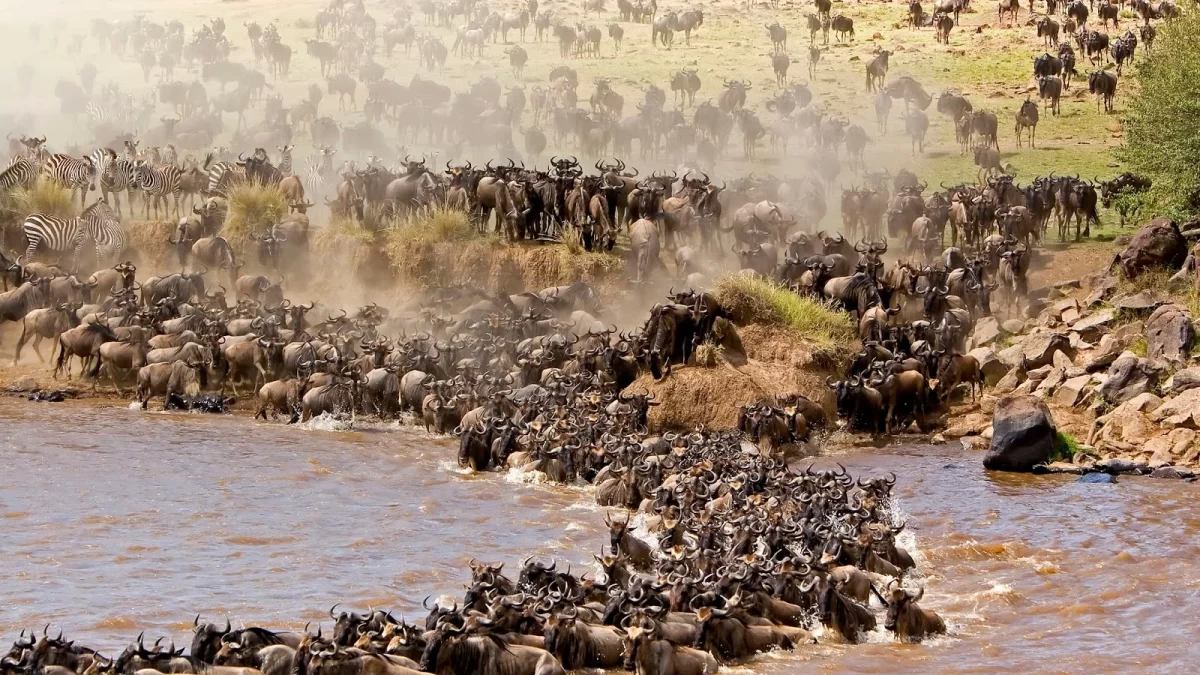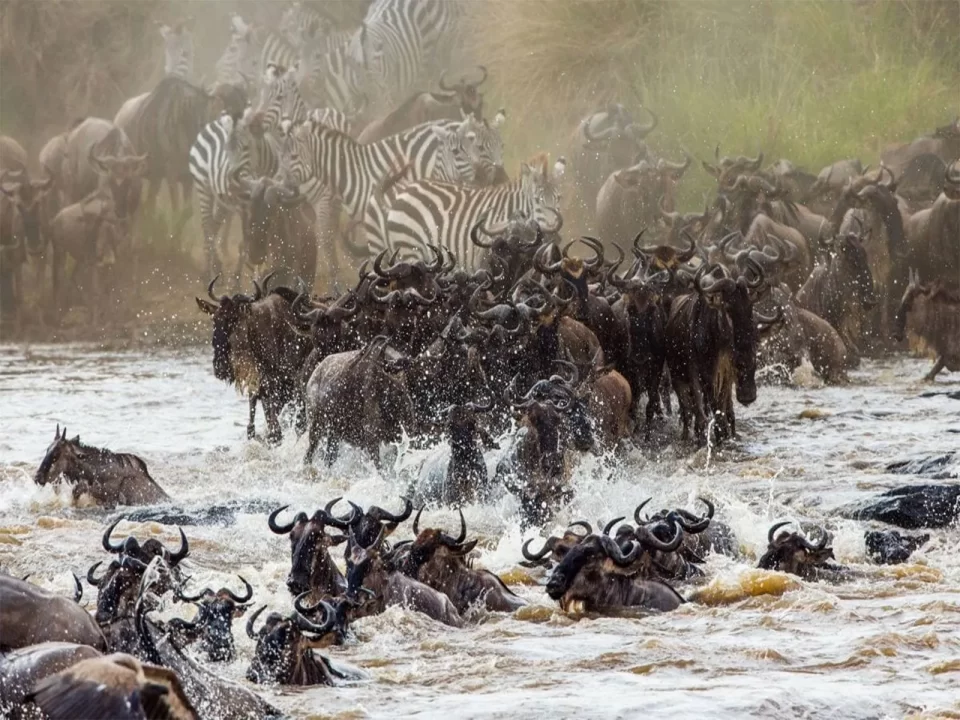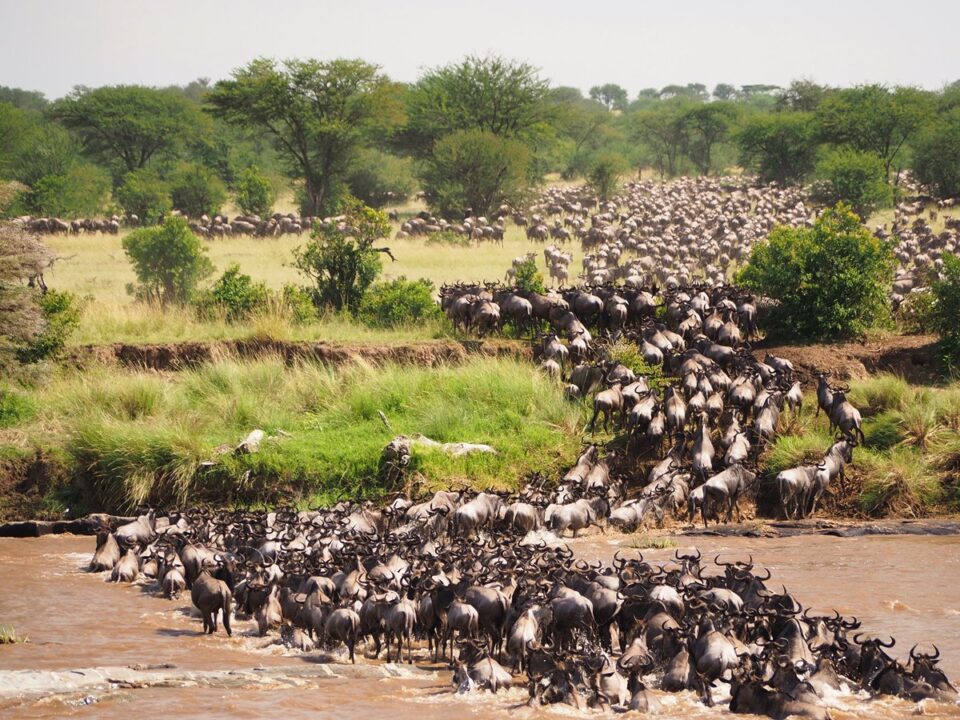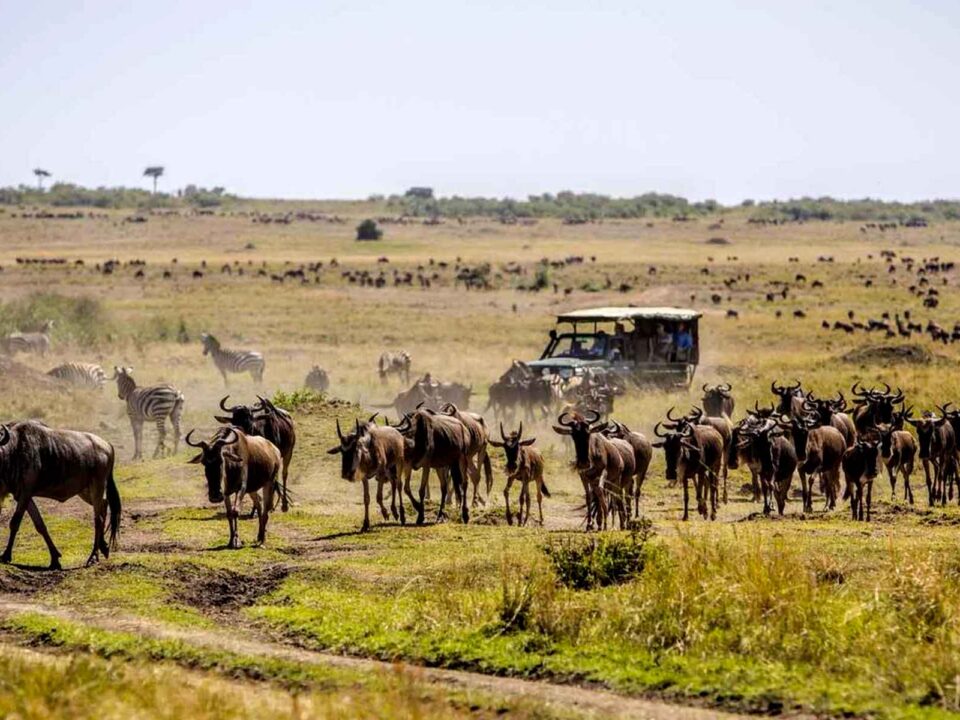Serengeti Great Wildebeest Migration Safari 2024 – 2025

Safari Tours to Katavi National Park in Tanzania
March 8, 2024
Gorilla Tracking Safari from Kilimanjaro Airport
March 8, 2024Embark on a Spectacular Journey: Serengeti Great Wildebeest Migration Safari 2024-2025
Discover the awe-inspiring phenomenon of the Great Serengeti Wildebeest Migration with our exclusive safari experience for 2024-2025. This extraordinary annual migration sees vast herds of Wildebeests, accompanied by an array of wildlife including Zebras, Grant’s gazelles, Thomson’s gazelle, Elands, and Impalas. The migration follows a predictable pattern, driven by the search for fresh grass and water, creating a mesmerizing spectacle that unfolds throughout the year. The precise timing of this migration is intricately linked to the annual rainfall patterns.
Month by Month Serengeti Great Wildebeest Migration Safari
The journey begins as the short rains commence in early November, and by late November to December, the herds arrive on the short grass plains of Serengeti National Park. These expansive plains, situated south and east of Seronera around Ndutu and the north of the Ngorongoro Conservation Area, become a haven for wildebeests and zebras, feasting on nutrient-rich grass. This feeding frenzy continues through January, February, and March, with a significant number of wildebeest calves born in February. As the months progress, the herds gradually spread west across the plains, initiating the Great Migration North around April.
Come May, the Serengeti’s Wildebeest embark on a northward movement, driven by the quest for fresh grazing and water. The areas around Moru Kopjes and the west of Seronera witness a bustling scene, with moving columns comprising hundreds of thousands of animals, accompanied by zebras and scattered Thomson’s and Grant’s gazelles.
By June, the Wildebeest migration often encounters a pause on the south side of the Grumeti River, where channels and pools obstruct or slow down their northern migration. The wildebeests gather in the western corridor, sometimes reaching high densities before crossing the river. While these river crossings lack the drama of the Mara River further north, they remain a vital annual event, attracting large crocodiles.
The northward movement persists in July and August, with herds spreading across the northern Serengeti, navigating through Grumeti Reserve and Ikorongo, as well as the heart of Serengeti National Park.
September marks a crucial phase as herds traverse the northern Serengeti, encountering the Mara River, a formidable obstacle. The crossing of the Mara River unfolds in a spectacular display of panic and confusion, with herds frantically navigating the rushing waters. Witnessing this dramatic event is an unforgettable experience, as herds may cross north one day and return south a few days later.
In October, the wildebeest herds harmoniously begin their southward migration through western Loliondo and the Lobo Area of Serengeti National Park, returning to the rejuvenated short grass plains of the south as the November rains bring new growth.
Book Your Serengeti Great Wildebeest Migration Safari
Contact Trek Africa Expeditions to secure your spot for the Serengeti Great Wildebeest Migration Safari in 2024-2025. Elevate your safari experience by combining it with mountain gorilla tracking in Uganda or Rwanda.




